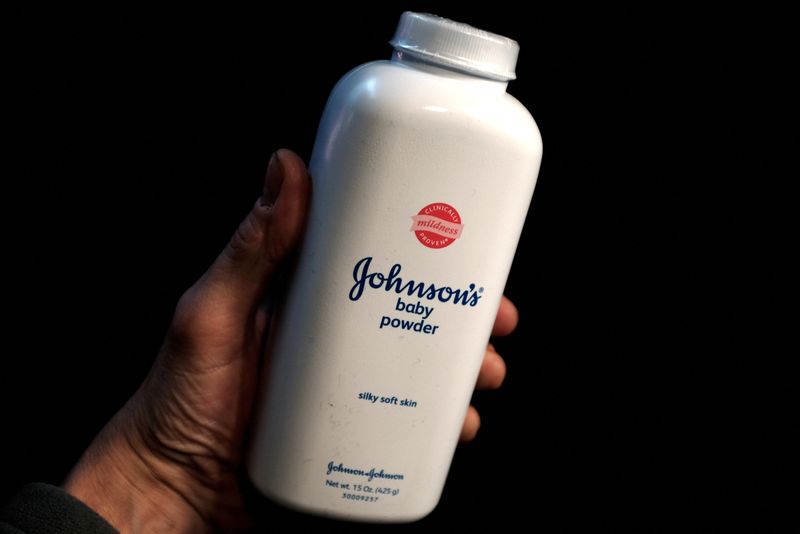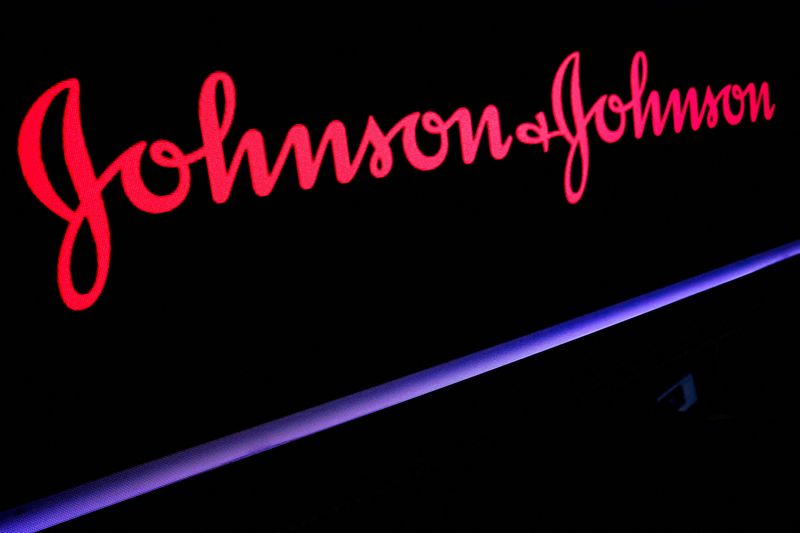By Mike Spector
(Reuters) - Johnson & Johnson (NYSE:JNJ) is exploring the idea of placing a subsidiary shouldering tens of thousands of talc lawsuits into bankruptcy proceedings for a second time, despite a January federal appeals court decision invalidating the so-called Texas two-step legal maneuver, according to a court filing and four people familiar with the matter.
A J&J lawyer tasked with settling about 40,000 lawsuits alleging the company’s iconic Baby Powder and other cosmetic talc products cause cancer has approached plaintiffs’ lawyers in recent weeks. The lawyer has proposed the two sides craft an agreement to resolve the litigation, which would then be consummated after the J&J subsidiary refiles the bankruptcy, the people said. Some plaintiffs’ lawyers have signed confidentiality agreements to discuss the idea, one of the people said.
In a court filing Tuesday, lawyers representing a creditors committee of talc plaintiffs said they recently became aware of discussions about a second J&J subsidiary bankruptcy. “As the [committee] is responsible for representing the interests of all talc claimants, it must now advise this Court and the public that Johnson & Johnson and/or its affiliates … has threatened a second bankruptcy filing.”
Johnson & Johnson did not immediately respond to requests for comment.
J&J executed a Texas two-step bankruptcy in October 2021. The novel tactic involves using a Texas state law to divide a company being sued into two, then shifting liability to one of the newly created subsidiaries. The J&J subsidiary that was to absorb liability for the talc cases, LTL Management, declared bankruptcy almost immediately after it was created.
LTL initially proposed to pay $2 billion to settle the litigation and possibly more. J&J agreed to fund any settlement a bankruptcy court eventually approved.
Many plaintiffs’ lawyers have decried J&J’s two-step, portraying it as an abuse of the bankruptcy system by a multinational conglomerate with a market capitalization exceeding $400 billion that is little danger of running out of money to pay plaintiffs.
Andy Birchfield, a plaintiffs' lawyer at law firm Beasley Allen, said on Tuesday that claims “could easily be resolved if Johnson & Johnson would stop playing games and abusing the bankruptcy court process."
J&J and its subsidiary have argued the bankruptcy served a greater good for all parties, including plaintiffs: The restructuring could deliver settlement payouts more fairly, efficiently and equitably than a “lottery” offered by trial courts, where some litigants get large awards and others get nothing.
Reuters last year detailed the secretive planning of Texas two-steps by J&J and three other major companies in a series of reports exploring corporate attempts to evade lawsuits through bankruptcies.
The 3rd U.S. Circuit Court of Appeals Philadelphia rejected J&J’s gambit in January, ruling that the cash-flush subsidiary had no legitimate claim to bankruptcy protection because it wasn’t in financial distress. The appeals court pointed to a funding agreement between J&J and its subsidiary that provided the new unit with the financial wherewithal to settle lawsuits.
The appeals court at the end of March denied the J&J subsidiary’s bid to delay the ruling from taking effect while it seeks a review from the U.S. Supreme Court. The appeals court also previously denied the J&J subsidiary’s request to reconsider its decision.
The judge overseeing the case on Tuesday said he planned to dismiss the J&J unit's bankruptcy as soon as today. That would allow lawsuits and trials to resume in courts across the United States.
SECOND CHANCE?
Now, discussions are underway for the J&J subsidiary to file bankruptcy a second time and again seek to halt the lawsuits and force a settlement in bankruptcy court, the people familiar with the matter said.
How the J&J subsidiary might square such a move with the appeals court ruling remained unclear.
One strategy the J&J subsidiary could attempt is to reach an agreement with a supermajority of plaintiffs ahead of any bankruptcy filing, the people familiar with the matter said. The crux of this strategy is to persuade lawyers representing 75% of plaintiffs to settle ahead of time.
That threshold is required for a bankruptcy judge to approve settlements in cases involving asbestos, a higher bar than other kinds of Chapter 11 court restructurings. A December 2018 Reuters investigation revealed that J&J knew for decades about tests showing its talc sometimes contained carcinogenic asbestos but kept that information from regulators and the public. J&J has denied its talc contains asbestos.
Securing widespread agreement among plaintiffs for a settlement could ease the path of J&J’s subsidiary if it files a second bankruptcy. In the first case, litigants resisted settling, balking at the company’s initial $2 billion offer. Court-ordered mediation sessions failed to produce an agreement.
Even with a prearranged settlement, however, a minority of talc plaintiffs could ask the bankruptcy judge to dismiss the Chapter 11 filing yet again, triggering the same hearings and rulings that led the appeals court to invalidate the tactic in the first place.
A JUDGE’S WARNING
The essential challenge facing J&J is how to get around the problem identified by the 3rd Circuit — the fact that its well-capitalized subsidiary had no legal claim to bankruptcy protection. The ruling cited the funding agreement between J&J and its subsidiary, calling for J&J to supply billions of dollars to pay settlements.
Dropping the funding agreement, however, could create other legal problems for J&J. Judge Thomas Ambro, the appeals court judge who wrote the decision overturning J&J’s two-step, warned that, without the funding agreement, the company could run afoul of fraudulent-transfer prohibitions.
Such rules typically apply to firms seeking to transfer assets out of a company just before filing for bankruptcy, to put them out of the reach of creditors. In the case of J&J, however, transferring all the lawsuits to another company — one without money to compensate plaintiffs — could run afoul of the same rules.
J&J has long been aware of that legal pitfall. Greg Gordon, the Jones Day lawyer who led J&J’s Texas two-step planning and execution, has previously said the funding agreement was designed to insulate J&J from accusations of such fraudulent maneuvers.
“We don’t even want to have an argument” about fraudulent transfers, Gordon said at an April 2021 conference in Washington, explaining why J&J agreed to “unlimited funding” of the subsidiary under bankruptcy protection.
Jones Day did not immediately respond to requests for comment.

Ambro, in the appeals-court ruling, said of such assurances: “We take J&J and LTL at their word and agree” that the subsidiary had plenty of money, explaining why LTL didn’t qualify for bankruptcy.
The judge noted that J&J’s promise of unlimited funding was essentially an “ATM” for the subsidiary, insulating it from “any threat to its financial viability.”
